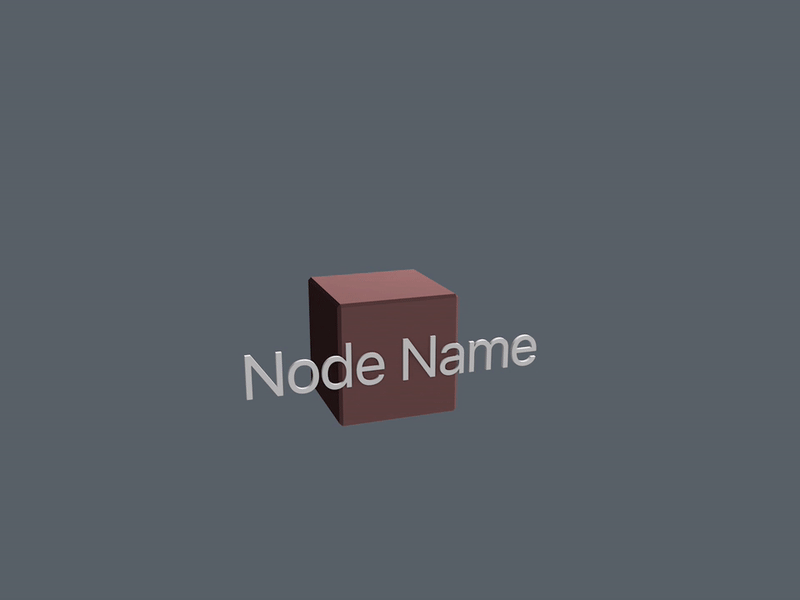Running with ideas at Hack Week XII
As I approach the main hall where Unity Hack Week XII is happening, I pass small breakout groups having intense discussions in French, Dutch, Russian, and in various accents ranging from the Queen’s English to a Texas drawl. Whatever the language or accent, though, there’s an air of determination and a common look of focus in people’s eyes. The atmosphere doesn’t feel heavy, though. There’s also a lot of laughter, a lot of yummy cake, and a lot of positive energy.
I don’t know if it’s the ocean view, the fact that the sun is shining on the Great-Belt bridge connecting Denmark’s two biggest islands in the distance, or just the creative energy of a Unity Hack Week, but you can definitely feel the positive creative vibe.
I'm out of paper. Can I draw on your arm?
Inside people are drawing on everything: Sketches on laptops, notes on napkins, diagrams on whiteboards, Some, it seems, are trying to draw their ideas in the air gesturing to the group around their table. And when you ask them what they’re working on, they bubble with excitement.
“Wanna see how we’re remapping Made-with-Unity games to give them an old-school arcade feel. I’ll tell you in 20 seconds,” says Joseph Scheinberg who is putting the final touches on a diagram he’s about to share with the group. (Joseph normally works on the build pipeline back home in Austin.)
Building on an idea (literally)
The idea Joseph is working on is one Richard Fine, a sustained engineering developer from the UK, brought back from a Unite event. The goal is a video cabinet that hosts Made-with-Unity games, but gives them an old-school arcade feel, The idea being that it would make a great showcase at future events. The Hack Week group just ran with it.
The project had a technical aspect requiring that the team build a remapper/launcher in Unity and a LED unit that transmits lights and audio with an equalizer effect. Beyond that, though, it meant they would have to quickly build an actual wooden cabinet with slots for joysticks and buttons. Luckily, they had the right woman for the job in their group: UX/UI designer from Montreal, Christine Rivard.
“Christine’s been kicking ass,” says Ryan Hylland, a software test engineer from Seattle. “I usually just use pen and paper to sketch an idea, but she did a Sketchfab drawing we could roll around to really visualize it. Then she ran to the local hardware store [where she was appalled by the Danish price of paint], borrowed the hotel’s power tools, and actually built and painted the cabinet. You should have seen her with the circular saw.”
Hack week explorers
While that group is taking contemporary games and making them look old-school, another group, all donned in Oculus Rift headsets, dips into the future experimenting with Visual Scripting and VR.
This group is exploring the idea of creating a VR bread board where you can hook up events with functions to create game logic. It’s a visual space where you can virtually pick up two variables represented by balls, put them in a machine, and get an output on the other side without having to write code.
However, the team stresses that–like all the projects at Hack Week–this is not necessarily something that will become a feature. And even if it did, it would not be applicable to non-trivial coding. In fact, they say the real value is the opportunity to discover new ways of working.
“VR is wildly unexplored territory because it’s so new. No one knows know what’s good and what’s bad, so you have the option to disregard guidelines that you don’t believe are true,” says Chris Mahoney, who normally works on Unity Cloud Build in Austin. And his group teammate, Hugo Van Heuven, UX design director from the UK, adds with a twinkle in his eye: “We’re explorers. I was born too late to explore the world and too early to explore the universe, so I’m exploring VR.”

A whole week to focus on just one thing–wow
Hack Week is also a great opportunity to kick-start projects, which would otherwise just keep getting put on the back burner.
“We already have license to use 20 percent of our time on non-core tasks. But sometimes there are things that you know would add value, but the scope is just too big to get it started in that time. Projects that fall between the cracks,” says Søren Løvborg from the core foundation team in Copenhagen.
Søren believes his Hack Week team will complete a working prototype for internal new employee training in tools.
“Having five days in a row where you can just focus on this one task made it possible to get it up and running. Now it’ll be much easier to get an idea of what it looks like, how it works, and then we can then do the long-term work of actually developing the training material.”
Baby seeds that grow to become full-fledged features
Some Hack Week projects, like Søren’s, will probably become valuable internal tools. Others are more about exploring new ways of working and planting the seed for future innovative thinking. Then there are those projects that sprout to become important features (just as WebGL, the Profiler and Progressive Lightmapper were born from previous Hack Weeks). What will be the next killer features born from this Hack Week? Stay tuned to the Unity Blog, and we’ll get back to you within the next couple weeks with some likely candidates. Also, check out the official Unity Roadmap for confirmed features.
Is this article helpful for you?
Thank you for your feedback!
- Unity Labs
- Copyright © 2024 Unity Technologies